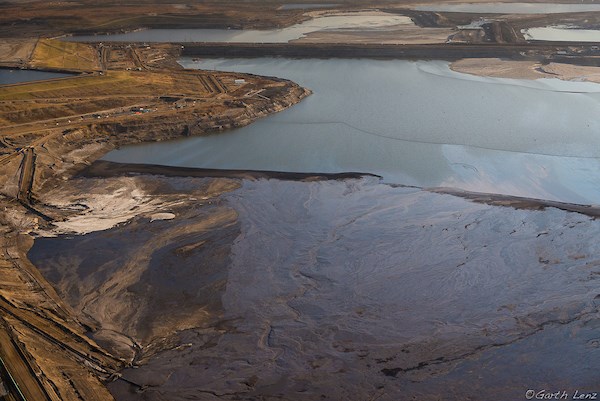ATHABASCA - In 2018 a complaint was made to the Commission for Environmental Cooperation regarding the potential for leaking tailings ponds, and Environment and Climate Change Canada continues to investigate.
Keepers of the Athabasca, in partnership with a GW Solutions team of hydrologists have since developed a new tool funded by the Alberta EcoTrust Foundation and Society of High Prairie Regional Environmental Action Committee (REAC) to track the pollution and recently published their report.
“Every little spot is different according to the geology underground but what they showed is yes, the tailings are leaking into the groundwater,” explained Keepers of the Athabasca interim executive director Jule Asterisk. “And yes, they are coming up into the Athabasca River and once they’re in the Athabasca how far does that go — Lake Athabasca, probably up to the territories and the arctic.”
The tool examines 3D images of the subsurface around tailing ponds associated with the bitumen mines in northeastern Alberta and allows for publicly available information on water chemistry using a new interactive data integration and visualization platform to help understand what is happening to contaminated surface water.
“Any groundwater testing that would be performed would have to be by industry because when we did this project, we learned that we can’t even go to the tailings ponds without permission from industry to get on to their leases,” Asterisk explained. “Of my 73 industry contacts that I have through the Integrated Water Management Working Group, not one of the companies responded to our request to partner with them.”
Government and industry have known about the possibility of tailings leaking into groundwater since 1982 according to the Keepers citing seepage monitoring and groundwater recovery wells are commonly in place next to tailing ponds to return tailings that have leaked out horizontally.
There is no such measure for tailings that are leaking vertically, straight down into the groundwater, and in some cases, back up into the Athabasca River and no one has done groundwater testing around to see how far away the seepage travels.
“They’re just putting all their tailings in together in these tailings’ ponds. But the fact is that it’s not all equal; there’s tailings that are dangerous and there’s tailings that are less dangerous and there’s oil sands process water,” Asterisk stated. “And there’s a whole bunch of stuff that they have mixed all together.”
Current tailings management plans do not call for best practices such as compacted clay liners, plastic liners, dual plastic liners, tailings detection and return from between liners, or other common features of contaminated water management used in municipal landfills and other applications according to the report by the Keepers.
“Our approach is to treat those different waters according to their toxicity, not necessarily dump them all together into a sand pit that leaks into groundwater,” Asterisk said. “Put the worst ones in a full containment unit to dry them out and landfill the residues.”
Naphthenic acids are the major toxic component of tailing ponds and other toxic substances include cyanide, phenols, arsenic, cadmium, chromium, lead and zinc. Health effects include potential cancers, reproductive issues, and endocrine disruption.
Until recently, scientific research by industry and government avoided direct data which could reveal human health impacts, while using language which downplayed or ignored the possibility.
“It was government funded research to help the oil sands and they did a lot of research on how to make the tailings not toxic involving green chemistry and they got their costs down to between $1.60 and $3 per cubic meter,” Asterisk continued. “If they had implemented any of those designs, the tailings today would not be toxic, but they declined. They wanted the cost to be 50 cents a cubic meter.”
The Commission for Environmental Cooperation under NAFTA has been involved in an investigation of Canada’s management of tailings since 2011 and is in the process of producing a ‘factual record’ about the leaks according to a press release by the Keepers.
Keepers of the Athabasca oppose pilot projects planning to ‘treat and release’ tailings into the Athabasca River and support treatment of existing tailings pond material for recycling and industrial use, and ‘full containment’ for dangerous tailings. The ‘full containment’ option includes utilizing fully regulated tanks and employing active evaporation infrastructure.
While oil companies may spend $50 million per year on managing tailings the Keepers of the Athabasca, and the Indigenous Knowledge Holders they consult with, feel that the management of the tailings has not been effective.
“Ideally, the tailings wouldn’t not be all put together in the same tailings lake. They would be managed according to their toxicity,” Asterisk said. “We’d be super glad to consultant to help them work on stuff, but we know for a fact that they’re not willing to do anything.”
The platform the Keepers developed with the help of REAC and GW Solutions is intended for use by communities, researchers, industry groups, and others to answer questions about where and how toxic materials from tailing ponds are reaching the Athabasca River.
“All we can really say is, ‘Look, we’ve developed this new tool and now we can watch you polluting,” Asterisk concluded.



